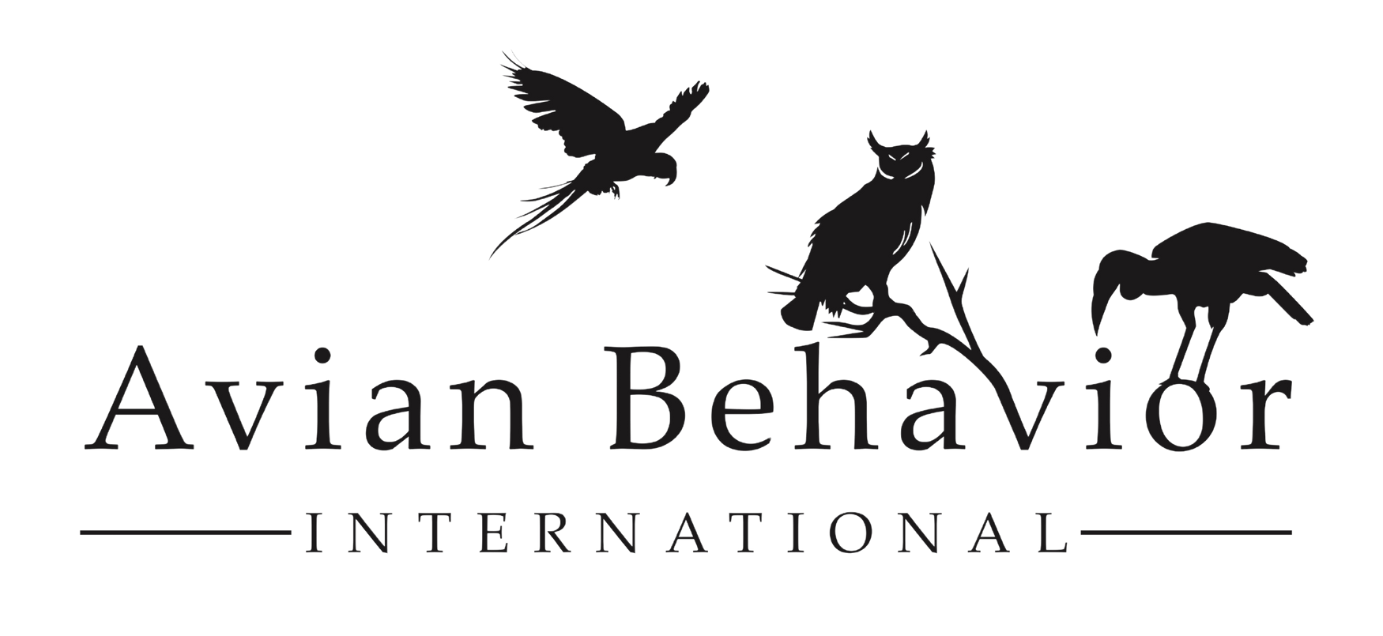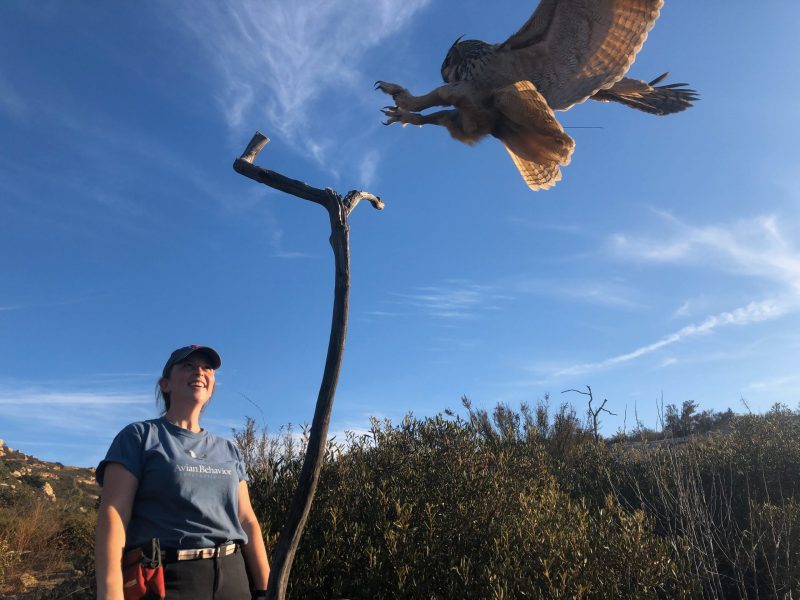
08 May Should You Go Jess Free With Your Bird of Prey?
As we progress in our animal training technology, there are many practices that we are re-evaluating and refining, and with good reason. As we have discussed in our blog, podcasts, and from Day One of our online membership, the extensive and pervasive use of weight management is one of those. Another subject that comes up in the training of birds of prey, falconry, and free flight raptor demonstrations is the use of falconry equipment such as anklets and jesses. In fact, it is not a new practice to forego the use of jesses when flying birds of prey, but some education teams are sharing their experiences more and more in the public arena.
This brings to the forefront how and why we utilize falconry equipment – or lack thereof – and not only the practical implications of going without, but how this changes the very infrastructure of our messaging and the physical management of the birds. As is common in the practice of our team at Avian Behavior International, let’s take a look at the how’s, why’s, and why not’s and explore the topic further.
Why do birds of prey wear jesses and anklets?
The reason why birds of prey are trained with leg equipment, whereas other birds such as parrots, corvids, kookaburras, pigeons, and others are not as safe wearing equipment, is purely by nature of their physiology. Raptors have specially designed legs that can withstand a fair amount of pressure. Though there are differing reports as to whether or not birds  of prey overall can carry off more than their body weight, we do know that they can absolutely use their legs and feet to dispatch prey weight that is several times their own. This, along with studies of their anatomy, reveal specialized connective tissue including tendons and musculature in their legs that are far different than other birds. While raptors are not immune to leg injuries due to equipment issues and trainer error, the risk factor is far lower than other bird species because of their physiology.
of prey overall can carry off more than their body weight, we do know that they can absolutely use their legs and feet to dispatch prey weight that is several times their own. This, along with studies of their anatomy, reveal specialized connective tissue including tendons and musculature in their legs that are far different than other birds. While raptors are not immune to leg injuries due to equipment issues and trainer error, the risk factor is far lower than other bird species because of their physiology.
Some benefits of jesses for Birds of prey
Bird of prey trainers and falconers have used jesses for thousands of years for many reasons. First and foremost, human safety is one of the prominent concerns when it comes to keeping jesses and equipment in. The business end of a raptor is its feet, hence the root of the name raptor, rapere: to grab or seize. Raptor feet are specifically designed to grab and not let go. The experience of getting footed by a raptor, even a one pound barn owl, is not easily forgotten. Raptors have lightening quick reflexes, and many foot, or snatch and grip with its talons, with incredible speed. Trainers have been footed in the face, through hands and arms, and even legs and feet. Eagles have the ability to haul deer and sheep carcasses, they can certainly do permanent damage to our flesh. Securing the jesses can help reduce the risk of footing, particularly as a raptor shows some increased anxiety around its food (see below for these training issues).
Jesses have also been used as a safety back up to prevent fly-offs. When transitioning from one part of a training session to another, securing jesses can help in certain situations, such as a bird of prey that is less motivated and might bate away from a hood or crate.
It can also be useful to fly a bird of prey with jesses in a situation where the bird is flying in a new area, with unfamiliar stimuli or might be prone to fly off for other reasons and a securing a quick recovery is of utmost importance.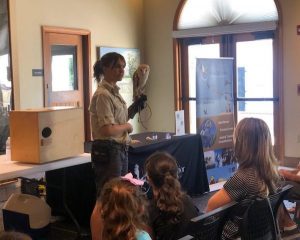
For injured birds that are part of a raptor education program, jesses may play an important role in providing a safety net to help to keep that bird of prey safe during the program and its preparation.
In the case of having some educational programs with a bird of prey on the glove in a new place, being able to secure the bird with jesses and a leash as a backup safety protocol in case of variables beyond our control could make the difference in whether or not the bird is involved in an education program offsite or not, especially if it is an outdoor event that other fully flighted birds are not able to go to.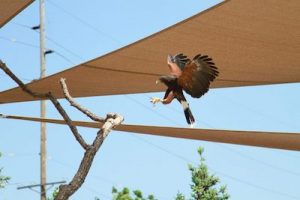
Benefits of going jess-free for birds of prey
When thinking of the benefits of going jess-free with our birds of prey, it does force us to look at our practices and our infrastructure differently. It cannot be understated that when done properly, jesses are a backup, not an actual training tool. While in our early stages as trainers and when we are working with younger, less fluent birds, we might lean on the jesses a bit more, it’s important to consider how they impact our relationship. If a bird of prey bates off of our glove, even if it doesn’t get hurt or go anywhere unsafe because we have the jesses secured, we still need to consider why it is trying to leave. Without jesses, we are forced to be much more aware. Utilizing jesses can actually cause more bating if we use them as a crutch rather than a safety net.
Jesses can get stuck or pinched on items when a bird is flying or even in their mews. Though often people will fly with slitless jesses, they can still become tangled in worst-case scenarios. Even when in the air, they can impact a bird’s flight, and it’s important to recognize this subtle yet important difference.
How going jess-free in raptors changes our message
In order to transition to working birds without equipment, there are a few things to consider. How birds of prey are housed, transported, and presented in education programs impacts many of these types of decisions. Transitioning from housing birds in small cubes to free lofting or a more complex tethering system for the bird’s safety and exercise can be a huge benefit. Going without equipment also means that some education programs may be unsafe. For instance, our birds of prey fly most of the year without jesses, yet they don jesses and leashes for education programs offsite, for which they  are trained to sit on the glove with positive reinforcement. This is something that we have consciously trained and decided is the best way we can accomplish our mission and our goals. There are instances where we feel the benefit of flying with jesses outweighs the potential risks. For instance, our augur buzzard has taken years of work to bring to the point where he is showing more confidence in his environment. He still might have the occasional fly off leading to a quick recovery. Augurs are also faster to foot, often, and he has show himself to be so. For this, we have maintained flying him with jesses.
are trained to sit on the glove with positive reinforcement. This is something that we have consciously trained and decided is the best way we can accomplish our mission and our goals. There are instances where we feel the benefit of flying with jesses outweighs the potential risks. For instance, our augur buzzard has taken years of work to bring to the point where he is showing more confidence in his environment. He still might have the occasional fly off leading to a quick recovery. Augurs are also faster to foot, often, and he has show himself to be so. For this, we have maintained flying him with jesses.
During nesting season, we will often fly Guinness our Eurasian Eagle Owl with jesses, as he becomes less predictable with increased juvenile and courting red tail activity. If we need to make a fast decision for his safety, we need to ensure that we have a way to secure him quickly.
It is important to understand that working a bird without jesses consistently does generally take a more experienced team of handlers and trainers overall, as birds of prey can be dangerous and it’s easy to inadvertently train them to foot if the birds are being handled. If they are simply being moved and flown hands-free, then some arrangement of the environment can go very far in terms of keeping birds and humans successful.
One aspect of working without jesses that can become a tantalizing crutch is instead of relying on the equipment is to lean more heavily on motivation through food control and weight management to keep the bird’s focus on food delivery so that the desired behavior is easier to reinforce. While not necessarily mutually exclusive, if in a certain situation, forfeiting one means leaning on the other, for my preferences, I would rather have a bird that eats more food and has equipment on than one that is hungrier more often. Once the training team has built up a bit more infrastructure and experience, perhaps they are ready to revisit the jess-free program in phases.
The question of whether or not to use jesses with birds of prey is a dynamic one. There are many variables to consider 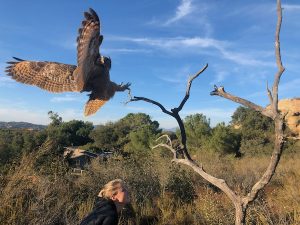 and can be part of an evolving conversation with you and your team. The use of jesses is not without its benefits nor its costs. There is much to be said for a bird of prey that knows her job well in interacting with the public in school events and so on that we feel is a safety issue if handled without a leash and jesses. When relied upon too heavily, jesses can impact behavior in ways that we may not fully appreciate, leading to avoidance behaviors and the need to apply motivation in other ways.
and can be part of an evolving conversation with you and your team. The use of jesses is not without its benefits nor its costs. There is much to be said for a bird of prey that knows her job well in interacting with the public in school events and so on that we feel is a safety issue if handled without a leash and jesses. When relied upon too heavily, jesses can impact behavior in ways that we may not fully appreciate, leading to avoidance behaviors and the need to apply motivation in other ways.
Bird of prey training resources
We look forward to continuing this lively discussion. Resources to help build skills to reduce the need to rely on jesses can help trainers see calmer behavior in the birds that they work with, alleviating many of the problem behaviors that we see. These include How to Prevent and Reduce Bating in Birds of Prey, Shaping Away Food Aggression in Birds of Prey, and our Ambassador Vulture Course for Premium Members in the Avian Behavior Lab!
Did you know you can try out an Annual Premium Membership for 14 days for FREE with the coupon code AVIAN? Monthly Memberships are $39 for an incredible wealth of resources!

